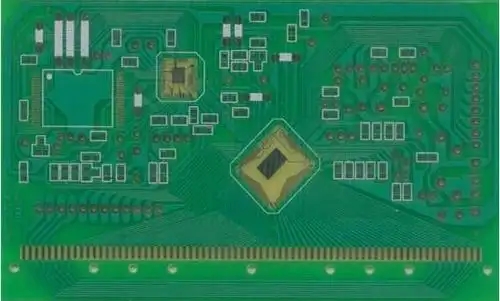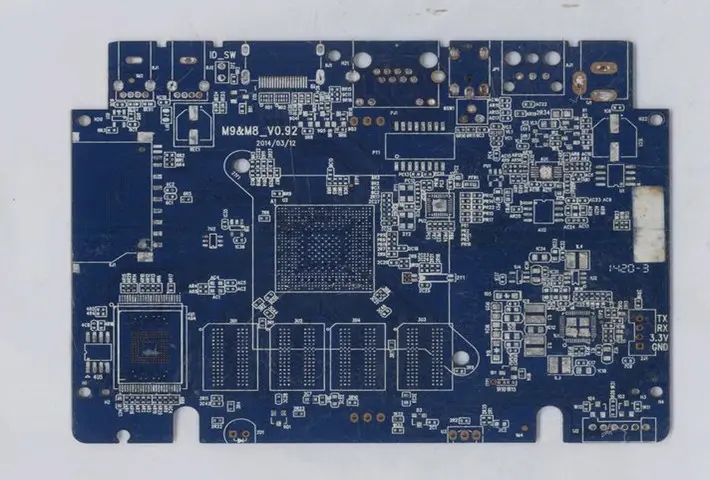
PCB process COB_ Process introduction_ Precautions_ Part II
Silver glue
If the wafer has a need for grounding or heat dissipation, it will generally use [silver glue], if not, it will use [anaerobic glue]. [Anaerobic adhesive] As its name implies, it will naturally solidify after blocking its contact with the air, and does not need to be baked at high temperature. When silver glue is used, it can only be cured by baking at high temperature. Generally, there are two kinds of baking temperature and time:
Bake at 120 ° C for 2 hours
Bake at 150 ° C for 1 hour
Pay attention to:
Anaerobic adhesive cannot conduct electricity and heat, so its service life should be paid attention to.
The reliability of anaerobic adhesive needs further review, and attention should be paid to the possibility of re melting.
Grain adhesion
Most COB factories belong to Low Cost, so most adopt manual mode to produce COB. Another reason is that a small number of diversified production is not suitable for automation. Of course, if the cost permits, the automation equipment can better control its production quality.
There are two ways to "manually" take the die and stick it on the die pad of PCB:
Use a small vacuum pen: This vacuum pen is more suitable for large size wafers. Because there is a circular rubber pad at the front end, wafers of too small size will be completely covered by the rubber pad, which will affect the correctness of wafer placement. Also note that the metal vacuum tube cannot directly contact the wafer surface to avoid scratching the wafer.

Use silica gel: suitable for small size wafers. Generally, the front end of the toothpick is stained with silica gel, which can be used to stick small sized wafers. When placed on the welding pad coated with silver glue, the silver glue will stick the wafers to achieve the purpose of sticking.
The silver glue coated on the welding pad shall ensure that 70~100% of the wafer area is adhered to, so as to ensure that the wafer will not move in the subsequent manufacturing process. It should be noted that the silver glue should not spill over the scope of the wafer to avoid contaminating solder joints.
Generally, the maximum wafer adhesion rotation angle allowed by the automatic wire bonding machine is 8~10 °, while that allowed by the manual wire bonding machine is 30 °. It is better to contact the circuit board manufacturer of the wire bonding machine to know the maximum capacity of the wire bonding machine.
Storage of wafers: Generally, wafers from wafer manufacturers use vacuum moisture-proof packaging; If the wafer has been unpacked, pay attention to the dust contamination that cannot be exposed, and the wafer surface cannot be contacted with metal objects. The unpacked wafers can be vacuum packed again or stored in a nitrogen cabinet to avoid oxidation and any contamination.
Welding wire
According to the shape of solder joints, the wire manufacturing process can be divided into "Ball Bond" and "Wedge Bond". COB usually uses aluminum wire, so it is Wedge Bond. According to experience and data, the strength of ball welding is better than that of wedge welding, which can be expensive.
Advantages and disadvantages of Ball Bond and Wedge Bond:
Generally, COB requires a manual wire bonder to repair the welding wire, because the automatic machine is too expensive. If it is stopped for repair, the output will be affected.
General COB does not recommend PCB as a plywood, because the wire bonding machine has the maximum size limit, and the moving range of the wire bonding head is limited to 4 "x4". If you want to hit more than two COBs at the same time, you should pay special attention.
As far as I know, the COB process capability can reach 90 um solder joint distance, but generally COB can accept 100~140 um solder joint distance.
Wire tension test
There are three ways to test the quality of the wire. The COB manufacturing process generally only measures the "wire pull".
Push crystal
Putt
Wire tension
Epoxy resin sealant
1. Most COB manufacturers use manual dispensing, because COB belongs to Low Cost, but manual dispensing is likely to damage the welding line and has the disadvantage of inconsistent dispensing shape.
2. The viscosity of epoxy resin is very important.
3. The use of automatic dispensing machine is helpful to control the shape of cured COB epoxy resin.
4. Some epoxy resins need to use preheating needle tubes, because the epoxy resin will reduce viscosity for a period of time after heating, which is conducive to the flow of epoxy resin and reduces the possibility of welding wire pulling. The recommended preheating temperature for oxygen resin is 60+/- 5 ° C, and for PCB is 80 ° C.
5. If the wafer solder joint spacing is relatively small (Fine Pitch), it is recommended to use epoxy resin with low viscosity and dam ring on the periphery to prevent the epoxy resin from flowing everywhere.
6. COB coating is attributed to its quality (air foam, wire failure rate). The liquid epoxy resin in the application form is more willing than two liquid epoxy resins. But one liquid seems more expensive than two.
7. Curing time shall be considered. Almost the subcontracting process should be used to cure at 120 ℃ for 2 hours and 150 ℃ for 1 hour. The current curing time of KHH is (80 ℃+1hrs)+(110 ℃+2hrs)
Ratio (yes or no)
Stir with machine
Glue selection
Cost
You can choose the mixed OK epoxy, but it must be refrigerated at low temperature.






